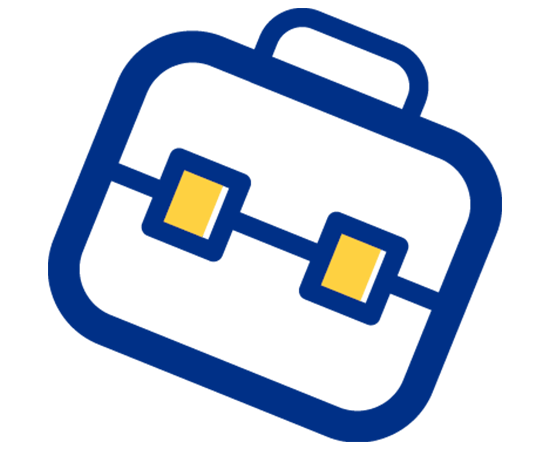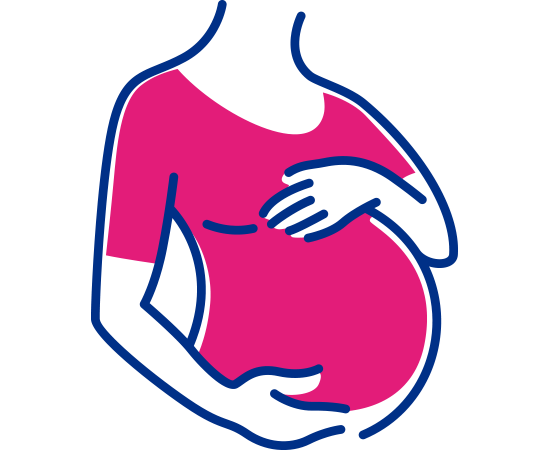Dispelling epilepsy myths: fact-checking and debunking report

Epilepsy is a chronic brain disorder that affects approximately 50 million people around the world1. In Italy, it affects about one person in every 1002. Epilepsy is characterised by a tendency to have recurrent unprovoked seizures: brief episodes of involuntary movements lasting a few seconds or minutes, which may involve a part of the brain (focal or partial) or the entire brain (generalised). These seizures are sometimes accompanied by loss of consciousness, altered movements, or lost control over bowel and bladder functions1.
Episodes can vary in frequency, occurring from less than one a year to several a day1.
They are triggered by changes in the brain's electrical activity, leading to convulsions or “seizures.”
Epilepsy can be classified based on the nature of the seizure as follows:
- Bilateral Convulsive seizure (previously know as Tonic Clonic Seizure or Grand Mal Seizure): This is the most commonly seen seizure and involves loss of consciousness limb contractions.
- Non-convulsive seizure: this can be further classified as:
- Absence seizures: primarily affecting children and adolescents, and characterised by brief loss of consciousness lasting up to 30 seconds, with no changes in body position3
- Focal Seizures with Retained awareness (previously known as simple partial seizures): manifesting with various symptoms but without loss of consciousness. Depending on the affected brain area, it can cause limb movements, unusual behaviours such as lip smacking or repetitive lip movements, or the patient may experience abnormal tastes or smells3
- Focal Seizures with Impaired Awareness (previously known as Complex partial seizures): these are focal seizures that can begin similarly to the ones listed above but which progress to loss of awareness of surroundings.3
References
Shedding light on misconceptions circulating on the web
Epilepsy is one of the oldest known diseases, with the earliest mentions dating back as far as 4,000 BCE1. Despite this, fear, discrimination, and social stigma have accompanied epilepsy for centuries1. Unfortunately, this stigma persists in many countries today, impacting the quality of life of individuals with this condition and their families1.
The survey
To determine the most requently searched epilepsy-related topics worldwide on Google, Google Trends was utilised. This allowed for an understanding of search trends from 2004 to the present day. Over the 19 years of data collected by Google,public interest in epilepsy has remained relatively constant.Additionally, research was conducted on FactChecker.it, and both systems revealed user interest in the same set of topics.
Regarding epilepsy, the public seeks information primarily in four areas:
- Definition of terms and characteristics of the condition:
- Seizures and convulsions that may accompany the course of the disease;
- Symptoms of the condition;
- Causes and treatment options, to a lesser degree.
Fact Checking

To determine the most searched facts on the web, the volumes of questions submitted to Google for each of the most searched topics were evaluated using data from the last 5 years. This revealed that the topic of convulsions in epilepsy was the most searched subject overall, with a peak in July 2019 coinciding with the death of the then 20-year-old Disney actor, Cameron Boyce, who had epilepsy and passed away due to Sudden Unexpected Death in Epilepsy' (SUDEP) [Fig.1].
Epilepsy-related topics or queries searched by usersin the last 5 years

Excluding the topic of convulsions, which was the most searched overall, the remaining five most searched topics by search volume regarding epilepsy were the following [Fig. 2]:
- Contagiousness of epilepsy
- Language and epilepsy
- Epilepsy and intelligence
- Lack of epilepsy treatment
- Epilepsy and fertility
Epilepsy-related topics or queries searched by users in the last 5 years, excluding convulsions

The facts that recorded the highest search volumes were:
- IT TAKES ONLY ONE SEIZURE TO DIAGNOSE EPILEPSY

A common misconception regarding epilepsy is that anyone experiencing a single seizure has epilepsy. In fact:
- Having a single seizure does not necessarily indicate epilepsy; up to 10% of individuals worldwide experience a seizure at some point in their lives1 and only around 40% or so will go on to have another one.
- Epilepsy is usually diagnosed if a person experiences two or more seizures without an apparent cause2.
- Diagnosing epilepsy requires a thorough examination of symptoms and a comprehensive medical history, including input from family, friends, or witnesses who observed the episode3.
- Blood tests are sometimes helpful utilized to investigate potential infections, metabolic disorders, toxicological issues (e.g., alcohol or substance abuse), or other conditions associated with the development of seizures.
References:
- PEOPLE WITH EPILEPSY CAN BITE THEIR TONGUE DURING A SEIZURE

During the tonic phase of tonic-clonic seizures,the muscles contract. This can lead to reduced breathing, due to contraction of the intercostal muscles and gnashing of teeth, due to contraction of the masticatory muscles. The patient may shout out or groan due to hypertonia of the phonatory muscles1. One common concern is that a person with epilepsy may choke on their tongue during a seizure. However, it is essential to know that:
- During a tonic-clonic seizure, people with epilepsy may bite their tongue or the inside of their cheek. If this happens, saliva may appear slightly reddish due to the presence of blood2.
- In such cases, it is crucial not to try to open the person's mouth to prevent biting, nor attempt to insert fingers or objects that could harm the person providing assistance or worsen the risk of choking for the person experiencing the seizure3.
- During a tonic-clonic seizure, putting someone in the recovery position will make sure that there is no blockage preventing breathing2.
References:
- EPILEPSY IS A CONTAGIOUS AND HEREDITARY DISEASE

In the Middle Ages, people with epilepsy were often considered possessed by demons and contagious, and were even burnt at the stake1. Although, in about half of the cases, the cause of epilepsy cannot be identified, epilepsy cannot be spread from person to person2. Genetic factors play a role in about onethird of cases with an identifiable cause3. Other established factors contributing to epilepsy include4:
- Head injuries, which can trigger seizures even months or years after the injury4;
- Brain disorders such as tumours or stroke. Haemorrhagic strokes, for example, are one of the leading causes of epilepsy in adults aged 35 and older4;
- Infectious brain diseases such as meningitis and encephalitis4;
- Injuries during delivery at birth4;
- Metabolic disorders, which can lead to reduced oxygen supply to tissues4.
References:
- EPILEPSY MAKES PEOPLE EMOTIONALLY UNSTABLE AND LESS INTELLIGENT

From Julius Caesar to Napoleon, from Lord Byron to Dostoevsky, many great figures in history are believed to have suffered from epilepsy, demonstrating that this condition is not synonymous with reduced intelligence1. Moreover, old beliefs, now scientifically outdated, used to associate epilepsy with mental disorders and deviant behaviour1. However, today we know that:
- Epilepsy is a neurological, not a mental, disorder1;
- Epilepsy, especially when not severe, does not significantly impact learning abilities1;
- Most children with epilepsy can attend school and participate in almost all sports and activities2;
- People with certain types of epilepsy may experience memory problems3;
- Individuals with epilepsy have unique characteristics like everyone else and do not exhibit typical traits of being less intelligent, nor are they exceptionally intelligent4;
- If stress affects the occurrence of seizures, people with epilepsy need to learn to manage stress, just like anyone else5.
References:
- PEOPLE WITH EPILEPSY CANNOT PERFORM ALL TYPES OF JOBS

In the social context, the most significant discriminations against individuals with epilepsy occur in the workplace1. The unemployment rate is higher among people with epilepsy compared to the general population1. It is crucial to know that:
- Epilepsy itself does not prevent someone from engaging in regular work activities1.
- In cases where a person experiences uncontrolled and frequent seizures, activities involving the risk of falls, such as working on stairs or suspended scaffolding, should be avoided2.
- People with epilepsy can hold positions of responsibility and work in healthcare, law, business, or government3.
- To apply for a driving license (categories AM, A, and B), individuals must demonstrate at least one year free from seizures, and after 10 years without seizures, they are no longer subject to restrictions1.
- While a diagnosis of epilepsy may prevent recruitment into the armed forces, the State Police considers employing individuals with epilepsy in office positions.1
- People with epilepsy are not physically limited3.
References:
- EPILEPSY IS NOT TREATABLE

Many still believe that epilepsy is an incurable condition. However, significant medical advances have been made in this field, such as:
- Up to 70% of people with epilepsy can live seizure-free with appropriate treatment1.
- After some without seizures, the doctor may consider reducing or discontinuing therapy2.
- Age-dependent epilepsy is considered resolved when the critical age has been passed or after 10 years without seizures and discontinuation of therapy in the last 5 years2.
- Even in cases of drug resistance, which occurs in about 30% of people with epilepsy, it is not necessarily definitive and irreversible2. Medicines can reduce the number or the severity of seizures.
- A small number of individuals who do not respond to drugs may benefit from neurosurgical intervention, with around 70% of surgically treated patients achieving excellent results2.
- Besides surgery, there are alternative therapies such as vagal nerve stimulation, neurostimulation techniques, and the ketogenic diet2.
References:
- WOMEN WITH EPILEPSY CANNOT HAVE CHILDREN

A false belief about epilepsy regards fertility and pregnancy. Many believe that women with epilepsy cannot have children. However:
- The main need for monitoring for women with epilepsy concerns the effects of drug therapy on reproduction, which can be addressed by discussing with an epileptologist1.
- Over 90% of women with epilepsy can have normal pregnancies and deliveries2.
- Natural childbirth is usual for women with epilepsy, while a caesarean section is reserved for women with frequent and intense seizures, who may have difficulties during labour1.
- Breastfeeding is still recommended as the drugs taken by the mother are generally found in low concentrations in breast milk1.
- Seizures can bring a risk of foetal distress, which makes epilepsy control during pregnancy even more important2.
